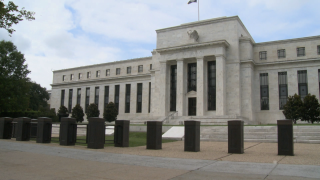What Does the Federal Reserve Do, Exactly?

Our central bank, the Federal Reserve, helps maintain high U.S. employment and stable prices for consumers.
The main tool the Fed uses to influence the economy is interest rates—the price everyone pays to borrow money.
High interest rates make borrowing more expensive, so you end up paying more for things like home and car loans. Then again, there are upsides: The money you have stashed in savings and money markets accounts will earn higher interest.
When interest rates are kept low, the opposite occurs. People earn lower interest on savings, but they can more easily borrow money for things they want to buy—like homes and cars.
That leads to many more people spending money, which gives companies the cash to reinvest in their businesses and hire new workers.
Read Next: What's At Stake If the Fed Raises Interest Rates
Consumer spending and a growing economy can also drive up prices or inflation though, and that’s one of the reasons the Fed has to strike a careful balance in controlling interest rates.
So how does it assert control?
The process the Fed uses to influence rates is called open market operations, the buying and selling of U.S. Treasury bonds. (Treasury bonds are how the U.S. borrows cash to fund government operations.)
When the Fed buys Treasuries from individual banks, it electronically creates new money—which didn’t exist before—to pay for those bonds. That’s how the Fed increases the supply of money in our monetary system.
So what do those individual banks do with that new cash?
Read Next: So What If the Fed Raises Interest Rates?
Well, we all know that banks take in money from depositors and lend it out. But it’s dangerous to lend out too much at any one time, in case many depositors want their money back all at once. Therefore the Fed sets a minimum amount of physical money banks hold at any given moment, typically 10%, to guard against that danger. Any cash a bank holds above that minimum—or reserve requirement—is called excess reserves.
The thing is, when the Fed pays banks for their Treasury bonds, it increases their excess reserves. And excess reserves are kind of a waste, because the money is just sitting there, not earning interest for the bank.
So banks are incentivized to put excess reserves out there for borrowing—and that means cheaper borrowing and lower interest rates for everyone.
Specifically, the interest rate that will be affected most immediately is called the called the federal funds rate. That’s the rate charged when banks lend to one another.
At any given moment, some banks will have excess reserves, but other banks may need to raise money on a short-term basis—if, say, they have fallen below their reserve requirement or need to raise money to make a loan to a corporate customer.
So one bank will lend money to another bank, charging the federal funds rate—and that rate will be higher or lower depending on how much excess reserves are in the system.
The federal funds rate is the interest rate you’ll hear Janet Yellen talk about “targeting,” since the Fed can influence the rate only indirectly—through its bond-buying program.